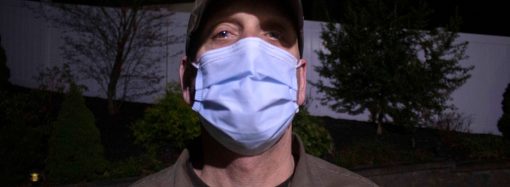By Shannon Fan
JRN 217: Journalistic Reporting and Writing
Like flowers growing from cracks in the sidewalk, many of us have had to find a way to push through hardship, especially in the midst of the pandemic’s disruption. Artist Bengali Bee found a creative way to cheer up by turning her local botanical garden into watercolor.
From her career in flower macro photography–producing photos of small items to larger-than-life size–Bee accidentally stumbled across watercolor painting when a bout of clinical depression kept her indoors. Unable to express herself through her photographs, she took up watercoloring instead and painted the flowers she had taken pictures of at her local botanical garden.
“Loved it, by accident,” she likes to say.
“Being able to create something helped me a lot,” she said. “Creativity helped to keep me calm and boost my mental condition. It feels good when people can connect to my work. Human connection gave me positive vibes during a dark time.”
Art can help make the most of your time when the world seems to be an endless loop of mandatory quarantine periods and lockdowns. In the digital age, it can also personalize experiences.
“You remember a place differently when you sketch it out rather than just taking a picture of it,” said Richard Alomar, president of Urban Sketchers, a nonprofit dedicated to promoting the value of location sketching. “You’re obligated to really look at it, and that creates a connection with the space.”
To start off, the weight of paper is paramount to watercolor success. The same color and stroke will look completely different when using printer paper versus one at the proper weight. Dan Sabau, watercolor artist, says that his favorite is the 300-lb cold press. That may sound like a fancy coffee machine, but “cold press” means that the sheets were pressed by cold rollers while “hot press” is pressed with heated rollers. For beginners, it’s best to stick with cold press since it’s easier to use and adapts to almost any style of watercolor painting.
Next, get yourself your primary coloring palette, and remember that when it comes to watercoloring, quality is better than quantity.
“Make sure you’re getting a good brand when it comes to colors, not student-grade paints,” Bee said. “Don’t worry about the variety of colors because you can blend your own shades. Just make sure you’re getting primary colors from a good brand.”
The best part about watercoloring is that there’s room to play around with different techniques, and you can add to the painting by making mistakes. Sabau, who originally studied oil painting, felt stuck in his medium and took a more aggressive approach to watercoloring instead. “I put different shades together, throw puddles of water onto the paper and then come back to the piece later and add beautiful elements to the piece,” Sabau said.
Looking through his Instagram, @dansabau77, you’ll notice that it consists of portraits that are more abstract than precise but perfectly capture the aura of his subjects. Some are happy, some are serious, and some have a story to tell.
“I like to leave the faces blank as it leaves more to interpret. I don’t know the subjects very well at the start and am hoping to build a connection with the person through the painting,” Sabau said.
Classes are great for beginners to improve technique and see what other people can do with the medium, but real improvements happen with practice. “It’s the old saying of how 10,000 hours of practice is the magic number of greatness,” Alomar said.
Genine Carvalheira, vice president of Urban Sketchers, recommends bringing a sketchpad and a pencil for the best practice method. “You find inspiration in everyday life.”
Starting a watercoloring hobby doesn’t have to be intimidating. You can create impressive pieces with just a few supplies and techniques. “It’s a very organic, versatile medium, and surprising things happen throughout the process,” Sabau said.
